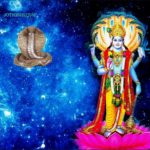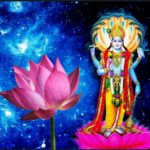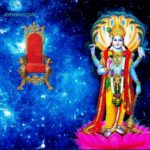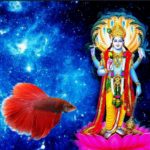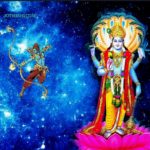Need for Universal Religion, Spirituality and an Analytical Interpretation of Sanatana Dharma
Since time immemorial, several saints and prophets have walked on this earth and propitiated the need and understanding of spirituality in human life. They have also defined different cultural systems of behaviors and practices based on their emergence in different parts of the world, which in turn gave birth to different forms of religions. As per Wikipedia, there are an estimated 10,000 distinct religions worldwide, but about 84% of the world’s population is affiliated with one of the five largest religious groups, namely Christianity, Islam, Hinduism, Buddhism or forms of folk religion.
If we further look at this, almost all religions have subdivisions. There was only one Buddha, yet today there are 32 sects of Buddhism. There was only one Jesus Christ, but there are 72 sects of Christianity. There was only one Prophet Mohammed, but there are so many sects of Islam with each claiming they are the real one. And Hinduism, you can’t even count the number of sects.
So, how did these different religions with different schools of thought emerge? If we do a deep dive into each of these religions, we would observe that there is a particular set of practices and beliefs defined by a prophet or saint and preached to the people of those times. The descendants of the people started practicing these beliefs in different parts of the world and slowly started identifying their belief system with a name. For example: the believers of the teachings of Jesus Christ identified themselves to Christianity, believers in Mohammaden identified themselves as Islam and so on. There are so many because it is coming from a tradition of thousands of years. So as many saints came that many schools of philosophy developed.
So far so good. But, if we really think about it the actual purpose, the root cause from where all these beliefs were defined was humanity, which somehow started getting more and more ignorant, when people started fighting in the name of their religions and their belief systems, affecting all fields of society, be it politics or to an extent to the acts of terrorism. And in this way, only the IDENTITY of the RELIGION remained, but the beliefs took a backseat. So, did SPIRITUALITY.
H.H. Sri Sri Ravi Shankar, founder of the Art of Living says: “We need to move from religion to spirituality. Religion is like the banana skin and spirituality is the banana inside.”
While in the name of religion there have been so many wars and division. This is because people have started tolerating each other’s religious beliefs, instead of accepting them. One must truly believe that none of these beliefs hold false as they were all started to serve humanity. The spiritual outcome of all these diverse religions, the banana inside the skin, is same, only the skin is different. However, once the skin is peeled off, the banana (Spirituality) unites people of all religions.
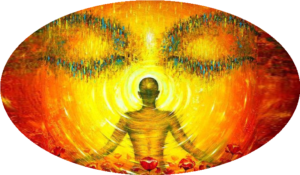
Swami Vivekananda said: “We see that the apparent contradictions and perplexities in every religion mark but different stages of growth. THE END OF ALL RELIGIONS IS THE REALIZING OF GOD IN THE SOUL. That is the one Universal Religion.
Let us understand this by considering a simple example of mathematics. When one is added to zero or two is subtracted from three, the final result is the number one in both the cases. However, the methods of deriving at it are completely different. But, did the number one seize to be number one, because it came from two completely different methods, one being addition, the other being subtraction? No. Similarly, though the methods of realizing god through spirituality might have been defined differently in different religious beliefs, the end result is same.
Let us consider another mathematics example to understand this. Remember that childhood math problem on percentage? lf shelf A has 4/5 of the number of books that shelf B has. If 25% of the books in A are transferred to B and then 25 % of the books from B are transferred to A then the percentage of the total number of books that on shelf A is? Now, what was the first step we performed while solving these kind of problems? Our first step was Assumption. We assumed: Let the total number of books in shelf B be 100. We knew the answer is not 100. But, we still assumed it. And, when we were introduced in the world of Algebra, in higher classes, we just assumed the answer to be a variable, say ‘x’. The innocence of not understanding the variability of algebras, led us to assume the answer to be 100 when we were kids. However, as we grew up, we knew how to identify a problem without assigning it a constant assumed value. But, we still assumed ‘x’.
What I want to entail here is, every religious system defined some code of conduct and some beliefs, which might just be assumptions, until we do not know the true nature of the ultimate truth, or what we call in layman’s language as understanding GOD. But, it is important to have faith in the assumptions initially, though on a gross or on a subtle level.
Now if you carefully go through these religious books, you will see that there is a vast amount of science and math encrypted within the scriptures. An example supporting this view is a verse in the Quran that says that God “has constructed the heavens with might” and is “steadily expanding it.” Proponents of the theory that the Quran foretells scientific discoveries say that this is line with the modern observation that the universe is expanding at an accelerating rate. Similarly, the mathematician Srinivasa Ramanujan (1887–1920) was open about his religious beliefs and their influence on his mathematical work. He claimed that the goddess Namagiri helped him to intuit solutions to mathematical problems. Likewise, Jagadish Chandra Bose (1858–1937), a theoretical physicist, biologist, biophysicist, botanist, and archaeologist, who worked on radio waves, saw the Hindu idea of unity reflected in the study of nature.
Swami Vivekananda said: “There is one principle which underlies all these various manifestations of religion and which has been already mapped out for us. Every science must end where it finds a unity, because we cannot go any farther; when a perfect unity is reached, that science has nothing more of principles to tell us. Take any science – chemistry for example. Suppose we can find one element out of which we can manufacture all other elements. Then, chemistry, as a science, will have become perfect. So with religion. The gigantic principles, the scope, the plan, of religion were already discovered ages ago, when men found the last words, as they are called, in the Vedas, ‘I am He’ – the truth that there is that one in whom this whole universe of matter and mind finds its unity, whom they call God or Brahman or Allah or Jehovah, or any other name. We cannot go beyond that. Our work lies in working it out and applying it to every part of our lives. Therefore, all these religions are not contradictory; they are supplementary for the good of mankind” (Reference: “What Religion is” – by Swami Vivekananda)
The prophets and saints were scientists and analysts of their times and wanted to preserve the knowledge, and might have felt a need to encrypt it, like we do at our workplace. Probably, the religious books are just referential text books which are our guide to discover and explore new things that interconnect science and spirituality. Some may argue that thinking of science and spirituality going together is irrational. But, I say, the very existence of science and its principles – who controls it? I think it is irrational to believe that all the physics, chemistry and biology which is so systematically arranged in this vast universe, is just there by itself, without someone controlling it. For some people, universe is the controller, for some an infinite formless being is the controller and some believe there is an infinite superior consciousness existing everywhere controlling everything. And that controller is what religious people term as “GOD”. However, these are just my own personal views. I might be wrong in this.
When it comes to so much of encryption and science, with so much of data from so many scriptures, I think, going by the hot trend of this decade, Analytics is the one of the many good ways of decrypting the knowledge, understanding it and drawing accurate insights out of it. Being an analyst myself in my profession, this is my sincere attempt, to understand spirituality based on findings and interpretations of the already existing religious teachings.
Now, when it comes to analytical understanding of religion and spirituality, one of the greatest works done in this regard was by Adi Shankaracharya who was an early 8th century Indian philosopher and theologian born in the village of Kaladi in Kerala, who consolidated the doctrine of Advaita Vedanta. He was prodigious and mastered the Vedas by the age of eight and went in search of a Guru towards the north, and is believed to have met Govinda Bhagavadpada by the River Narmada. Shankara studied Veda and Vedanta and took formal renunciation from him. By the age of sixteen, Shankara had accomplished all he wished by way of education and spiritual learning. His mission from then on was twofold: to consolidate the Advaita tradition and to revitalize the Vedic practices. He toured across the country and debated with scholars wherever he went to establish Advaita.
Now, let us ANALYZE HINDUISM or SANATANA DHARMA through Shankara’s teachings (Reference: The Roots of Vedanta: Selections from Shankara’s Writings). In Sanatana Dharma, there are four Vedas: Rig, Sama, Yajur and Aharvana. Each Veda is divided into two sections: the karma-kanda, which is the ritualistic portion, and the jnana-kanda, which deals with philosophy. These two are also expanded into four sections: the Samhita (Mantra), Brahmana, Aranyaka, and the Upanishad. This division represents a progressive evolution from karma (ritual and sacrifices) to jnana (meditation and knowledge).
Together, they enable a human being to realize all the purusarthas – dharma, artha, kama and moksa – to lead a fulfilled life here in this world, and liberation from transmigration, which is the summum bonnum of human life. Vedas are the ultimate authority and all other scriptural texts are based on them. As the Upanishads form the concluding portion of the Vedas, their teaching is literally termed as Vedanta (Veda + anta). The Vedas are known as sruti because they are revelations, and all the works of sages, like the dharma sastras, puranas and the epics are known as smriti (meaning ‘remembered’), and they expound the Vedas only.
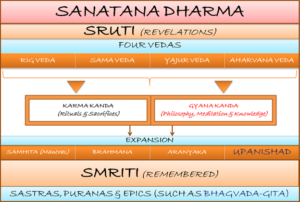
Shankara’s commentaries were mainly based on the prasthanatraya (Upanishads, Brahma-sutra and Bhagvada Gita), which teach the Ultimate truth. Shankara stated that the twofold Vedic religion of works and renunciation can maintain order in the universe.
The Upanishads are the fountainhead of Vedic vision and wisdom, and are said to be the grand finale of the Vedas. They are mystical, expressing the insights of the sages into Reality, and therefore, abstract in nature. Since language becomes inadequate in articulating what is essentially experiential, THE SAGES HAVE RESORTED TO MYTH AND SYMBOL AND SOMETIMES, PURELY NEGATIVE TERMS, to convey their intuitions of the absolute.
So, the UPANISHADS are the primary scriptures (SRUTI PRASHTANA) to know the Absolute Reality. Shankara considers the BHAGVADA-GITA next in order of priority. It is SMRITI PRASTHANA, because it occurs in the Mahabharata. Coming to the third of the triple canon, the BRAHMA SUTRA is the NYAYA PRASTHANA (REASON), which expounds the philosophy of Advaita.

The method employed in the Brahma sutra – the ADHYASA-BHASYA, is based on reasoning and is thus PURELY ANALYTICAL. In this method, Reality (Advaita lit. not two) pinpoints superimposition (adhyasa) of the not-Self on the Self as the reason for the experience of duality (subject-object) distinction, and traces the cause of superimposition to nescience (avidya/maya). If we try to understand this in relation to the current world of analytics, we gather the data (worldy karmic knowledge, prepare an analytical model (adhyasa) by superimposing the final one result on the data gathered, test the results through careful following of instructions in sruti and smrti scriptures and finally arrive at the end result – the summum bonnum of human life.
The concept of superimposition (adhyasa) is the basis of Shankara’s philosophical deliberation. The classic example of superimposition is mistaking mother-of-pearl for silver or mistaking a rope for a snake. The shining quality is common to silver and to mother-of-pearl while a coiled rope, because of its thickness, colour and length, appears like a serpent, when there is insufficient light. Shankara explains here that philosophical investigation can proceed only from the natural level of human engagement in the world involving all the faculties that contribute to the process of acquiring knowledge. The process of inquiry has to begin and proceed at the level of duality.

Maya (nescience, ignorance, illusion) is responsible for the one appearing as the many and so it is the principle of objectivity. It is also known as avidya. The non-dual Brahman which is unmanifest becomes manifest in association with maya. In the process, Brahman, which is nirguna, becomes saguna. Maya is defined as the power (sakti) of Isvara as it brings about the manifestation of the universe. Maya has two aspects: the power of concealment (avarana) and the power of projection (viksepa), with which it brings about the appearance of the universe. Shankara uses the term prakriti also for maya, when it is described as being made up of the three qualities (gunas) – sattva, rajas and tamas. Prakriti is responsible for the materiality of the universe.
Essentially, the metaphysical categories of Shankara’s Advaita are two: the SELF and the NOT-SELF. But for the purpose of explaining the phenomenon of plurality they are expanded further into ISVARA, JAGAT and JIVA .
Though Brahman is non-dual, the Absolute Reality (Nirguna Brahmana – without attributes) becomes manifest as ISVARA (Saguna Brahmana – with attributes) due to the adjunct of maya, and it is Isvara who is the material and efficient cause of the world (JAGAT). This can be understood from the example of the light from the sun or moon assuming the shape of the object on which it falls. Otherwise, as light, it is undifferentiated. Similarly, it is the non-dual Brahman that appears as the diverse manifestation, just as the sun appearing as many when reflected in different water bodies. The other metaphysical category is the individual soul (JIVA). The Upanishad states that the jiva is a conglomerate of the five sheaths (panchakoshas), that envelop and conceal the self (Atman) and by the process of negation of these sheaths, one by one, it unravels the self (Atman) within, and identifies the self as Brahman. From the outermost to the innermost, they are the food sheath (annamaya-kosa); the vital sheath which is the life-force (pranamaya-kosa); the mental sheath (manomaya kosha); the knowledge sheath (vigyanamaya-kosa); and the blissful sheath (anandmaya kosa).
Shankara explains that ignorant people like us identify ourselves with the body, senses, mind, intellect and vital force and lose sight of the fact that we are the Self. This is akin to case of a group of ten boys who, after swimming across a river, counted themselves to find out whether they had all reached the other bank safely. One of them, while counting, left himself out and found to his dismay that they were only nine. Only when he was told that he was the tenth did he realize he had forgotten to count himself. So also is man’s predicament in samsara. His identification with the objective world and his body-mind-intellect personality is so complete that he becomes lost to his own true identity and it requires a conscious effort to discover his true identity (as the Self within).
Another method of the subjective approach is by an analysis of the three states of human consciousness: waking, dream and sleep. The Self is unaffected by them all, and transcends the three states of waking, dream and sleep, and this state of consciousness is called TURIYA. Metaphorically, it is called the fourth state to distinguish it from the other three. The fourth state is considered to be that which is not conscious of the internal or external world, nor a mass of consciousness, nor simple consciousness, nor unconsciousness, un-inferable, unthinkable, indescribable, whose valid proof consists in the single belief in the Self, in which all phenomena cease; and which is unchanging, auspicious and non-dual – in short a state of Samadhi..
The relationship between Isvara, jagat and jiva is said to be relatively eternal, and it can be transcended only in the case of the individual jiva by liberation, which is regaining the state of non-duality of the Self.
Shankara states that the perception of subject-object distinction (duality) involved in the process of knowledge is due to superimposition of the not-Self (object) on the Self (subject). This marks the transition from EPISTEMOLOGY to METAPHYSICS in the philosophical quest. METAPHYSICS is the investigation into the nature of the Absolute Reality, and to Sankara, superimposition is the key to metaphysics.
EPISTEMOLOGY is the study of the mechanism of knowledge. The process of knowledge involves the triad of the inquiring SUBJECT, the OBJECT to be known, and the MEANS OF KNOWLEDGE (pramana). KNOWLEDGE OF THE SELF IS CALLED ‘UPANISHAD’, because the root ‘SAD’, prefixed by ‘UPA’ and ‘NI’, means that the RELATIVE KNOWLEDGE OF THE WORLD IS REMOVED BY THE ABSOLUTE KNOWLEDGE. The methodology adopted in the Upanishads is a dialogue between the preceptor and his disciple, and is also couched in stories and examples of other seekers of truth. SELF-KNOWLEDGE IS A THREEFOLD-PROCESS: faith in scriptural testimony (SRUTI), reasoning (YUKTI) during scriptural study and experience of the truth (ANUBHAVA). This makes it imperative that the scriptures be studied under a Guru who has experienced it because he can guide his disciple from personal experience.
Shankara stresses upon the fact that the threefold scriptural study process should always be started by first hearing it from a teacher and then reflected upon reasoning and meditated upon. This is true even today, otherwise there would not have been any universities and professors teaching there, even though infinite information is available on the web. Students still need a faculty, a teacher to understand the information. The Upanishads are generally in the form of a dialogue between the preceptor and the student and, often the whole teaching unfolds through a story as this method enables the spiritual seeker to grasp the teaching. This method is adopted because, if a subject is presented in the form of a story comprising a prima facie view and a conclusion, it is easily understood by the listener. If, on the contrary, it is presented only through sentences that convey the bare meaning, as in the case of logic, it is very difficult to understand, because the truth is highly abstruse. This is why we read about so many gods and goddesses in Hinduism. All these gods were symbolized by the saints as part of the Saguna Brahman and stories were framed in order to easily explain the knowledge to their disciple. However, in the later age, people misunderstood this, stating that Hinduism preaches so many gods and goddesses. Whereas, on a gross level, Hinduism or Sanatana Dharma in its originality is just trying to explain the one Nirguna Brahman, similar to other religions, for example, Islam that states Allah is the one and only God.
A classic example of scriptural study between Guru and disciple is the “Yoga Vasitha”, which occurs in the Ramayana. The text is structured as a discourse of sage Vasistha to Prince Rama. Sage Vasistha is mentioned and revered in the seventh book of the Rigveda, and was also called as the first sage of the Vedanta school of Hindu philosophy by Adi Shankara. This monumental scripture is the greatest help to the spiritual awakening and the direct experience of the truth.
An oft-recurring expression in this scripture is – ‘KAKATALIYA’ – a crow alights on a coconut tree and at that very moment a ripe coconut falls. The two unrelated events thus seem to be related in time and space, though there is no causal relationship. Such is life and creation.
But the mind caught up in its own trap of logic questions why, invents a ‘why’ and a ‘wherefore’ to satisfy itself, conveniently ignoring the inconvenient questions that still haunt an intelligent mind. Vasistha demands direct observation of the mind, its motion, its notions, its reasoning, the assumed cause and the projected result, and even the observer, the observed and the observations – and the realization of their indivisible unity as the infinite consciousness. (Reference – ‘The Supreme Yoga – Yoga Vasistha’ – by Swami Venkateshnanda). In a nutshell, it is the mind that makes things appear. Also, whatever appears in one’s consciousness, that seems to come into being, gets established, and even bears fruits! The worlds occur due to an appearance in Lord Brahma’s consciousness, who is creation personified. Some excerpts from the Yoga Vasistha that validate this theory of Advaita and transition from non-duality to duality:


To summarize, this article has just focused on the analytical understanding of a portion of the Sanatana Dharma, but similar study can also be done on other religious scriptures. One can also do inter-religion comparisons to broaden the horizon of their analytical study. For example relating Karma Yoga in Bhagavad Gita to Buddhism’s law of cause and effect, or relating Bhakti yoga to the love of god in Christianity. The scope is vast, but am sure, when we deeply study any of these scriptures, the end result is always going to be the same and is going to trace us back to the one single universal truth, which is the need of the hour in this rapidly conflicting world.






